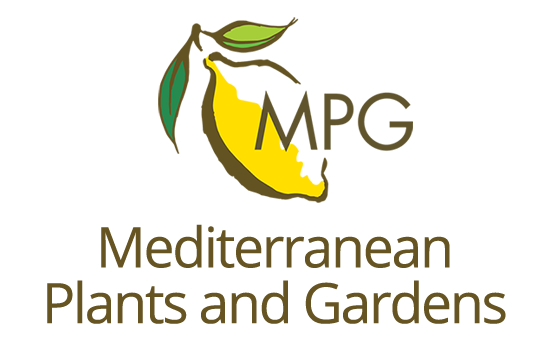The unique flora of the Western and Northern Cape
14 – 27 August 2025
Bursary report by Jackie Hunt
Introduction
There are many superlatives that describe the botanical importance of the Cape Floristic region. It is home to the greatest non-tropical concentration of higher plant species in the world, with 9000 species. More than 6200 (69 per cent) are found nowhere else in the world. The Cape Floral Kingdom is the smallest of the world’s six floral kingdoms but also the richest and also the only one contained within a single country.
In 2004 the Cape Floral Region Protected Areas were inscribed on Unesco’s World Heritage List. This recognises the region as one of the world’s great centres of terrestrial biodiversity and ʻhottest hotspotsʼ for diversity and density of endemic and threatened plants and associated fauna. It is a highly distinctive phytogeographic unit and its protected areas also conserve the outstanding ecological, biological and evolutionary processes associated with the distinctive Fynbos vegetation, unique to the Cape Floral Region.
The Cape has a Mediterranean climate with mild wet winters and hot dry summers. The spring flower display takes place August to early October, following the winter rains. Our tour was early in the flower season but following a wet winter we experienced high volume of flowers in some areas, notably Namaqualand and Knersvlakte.
This 14-day tour was organised by Mediterranean Plants and Gardens, offering a rare opportunity with this organisation to visit one of the non-European Mediterranean climate zones. It was my first experience of a tour dedicated to discovering wild plants. Although I have grown many plants that originate in other parts of South Africa I was blown away by the quantity, range and unfamiliar flora of this region, as well as the stunning natural landscapes. We travelled from Cape Town in the south to Springbok in the north, driving about 1500km and recording around 500 species of plant. This report describes our daily excursions and just a fraction of the plants and animals that we saw.
I am indebted to Mediterranean Plants and Gardens, the Hardy Plant Society’s Kenneth Black Bursary Scheme and the Royal Horticultural Society for awarding me bursaries that enabled me to join the tour.
My objectives
To connect with and learn from people with a shared interest in Mediterranean climate zone plants.
Have the rare opportunity to study plants of the Cape Floral Region, recognised globally for plant diversity, density and endemism in order to identify plant adaptations to different environments to help inform plant selection and cultivation techniques in the UK.
To become a more widely experienced and trained horticulturist, to increase my botanical knowledge and field identification techniques and support my ambition to work with botanical and Mediterranean climate plant collections.
Learn from expert guides of local socio-economic importance of plants, pressure on critical habitats and solutions to climate change and biodiversity loss to help support the conservation and cultivation of rare and threatened plants from South Africa.
Develop my professional opportunities by growing my horticultural networks, extending my public engagement experience and using my love of photography, research and writing to share knowledge with an international audience.
To contribute further to this welcoming organisation.

The author at Goegap Nature Reserve
The report is over 14 days. Click on the links below to read a specific day’s report or click on the button at the bottom of each page to read each day of the report in consecutive order.
Day 1 – Cape Town and Kirstenbosch National Botanic Gardens
Day 6 – Springbok to Nieuwoudtville
Day 8 – Nieuwoudtville to Cederberg Mountains
Day 10 – Cederberg to Langebaan
Acknowledgements
Thank you to Mediterranean Plants and Gardens, the Hardy Plant Society Kenneth Black Bursary Scheme and the Royal Horticultural Society for awarding me bursaries.
Thank you to my fellow travellers for making the tour so interesting and amusing.
Particular thanks to Andrew Mayo organising the trip for MPG, his pre-trip information and extensive research into plant identification after the tour.
A special acknowledgement to our guide, Frank Gaude, for his incredible hard work, enthusiasm, commitment to inform and care for us and for sharing those top spots for flora and fauna.
Sources and Further Information
Plant list:
A plant list of the species we identified is available to MPG MEMBERS ONLY. Please email Andrew Mayo to request a copy: andrewjmayo@gmail.com
This report covers just a fraction of the plants we saw. My bursary reports for the Hardy Plant Society and Royal Horticultural Society will further explore flora of the different biomes and areas that we visited.
Websites:
SANBI – South African National Biodiversity Institute https://www.sanbi.org/gardens/
Botanical Society of South Africa https://botanicalsociety.org.za/
Darling Wildflower Society https://www.darlingwildflowers.co.za/local-wildflower-reserves/
UNESCO: Cape Floral Region Protected Areas https://whc.unesco.org/en/list/1007
Publications:
‘Wild Flowers of Namaqualand: A botanical Society Guide’, Annelise le Roux, Penguin Random House, 2015
‘Field Guide to Fynbos’, John Manning, Struik Nature, 2018
‘Nieuwoudtville, Bokkeveld Plateau and Hantam: south African Wild Flower Guide 9’, John Manning and Peter Goldblatt, Botanical Society of South Africa, 1997
‘Rock Art of the Western Cape – Book 1: the Sevilla Trail and Travellers’ Rest’ Peter Slimgsby, Slingsby Books, 2025
——–
Jackie Hunt – RHS Bursary Recipient [2025]; Kenneth Black Bursary Scheme Recipient; Mediterranean Plants and Gardens Bursary Recipient

